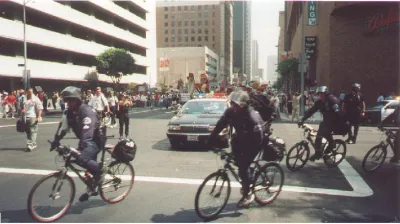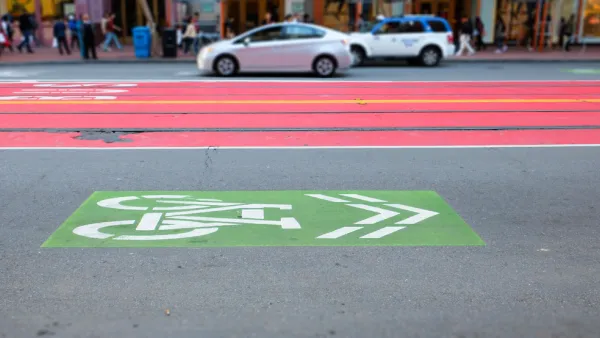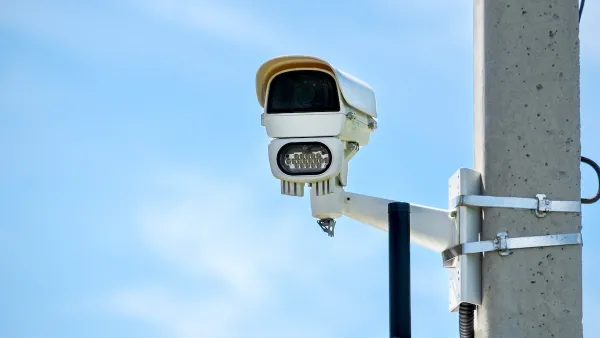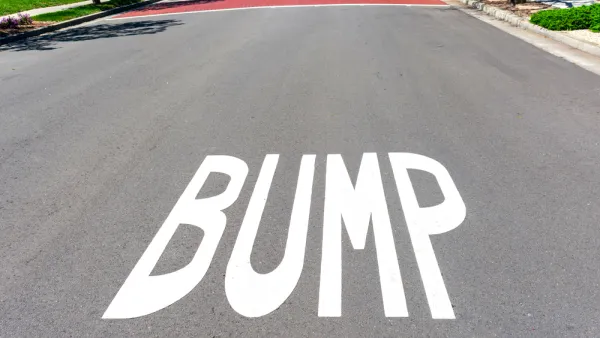As a leading bicycle advocacy organization withdraws support for police enforcement of Vision Zero plans, the discretionary practices of traffic enforcement come under rejuvenated scrutiny.

The Bicycle Coalition of Greater Philadelphia announces that it is adjusting its stance on Vision Zero—the term used to describe the global movement to eliminate traffic fatalities.
Vision Zero is a policy which emphasizes the “5 Es” of planning: engineering, education, encouragement, evaluation, and enforcement. “Enforcement” has always been the most controversial of the Es, and many organizations which focus on safe streets, like the Bicycle Coalition of Greater Philadelphia, have cautiously chalked up armed police enforcement as necessary to save lives.
But that was wrong.
According to the announcement, "armed police enforcement" has negative impacts for public safety, including in the process of reducing collisions on roadways. The announcement comes in response to calls by advocates, like Tamika Butler and Destiny Thomas, calling for a reconsideration of transportation planning innovations given the realities of public safety and policing for BIPOC.
The announcement also follows a newly rejuvenated discussion about the role of enforcement in policing the behavior of motorists. An article by Aaron Gordon ties data about traffic enforcement, to the doctrine police discretion and the public backlash against automated traffic enforcement (i.e., speed and red light cameras).
Gordon writes:
Regardless of which policy you personally prefer, any effort to eliminate racism in American policing must figure out what to do about traffic enforcement, which is the leading cause of interactions between police and the public, according to the Department of Justice. And, by law, it is almost entirely up to the officer whether to let the person go with a warning, give them a ticket, ask to search their vehicle, or escalate the situation even further. It is an interaction intentionally designed to let the officer do virtually whatever he or she wants, reflecting the inherent biases of our legal system.
That discretion favors white drivers, according to data cited by Gordon, which automated systems like speed and red light cameras short-circuit: "Today, we can still see how elemental discretion is to traffic enforcement, because we have an alternative, one many Americans loathe to the bone precisely because it had no discretion: automated enforcement cameras."
FULL STORY: We Are Dropping Police Enforcement From Vision Zero

National Parks Layoffs Will Cause Communities to Lose Billions
Thousands of essential park workers were laid off this week, just before the busy spring break season.

Retro-silient?: America’s First “Eco-burb,” The Woodlands Turns 50
A master-planned community north of Houston offers lessons on green infrastructure and resilient design, but falls short of its founder’s lofty affordability and walkability goals.

Delivering for America Plan Will Downgrade Mail Service in at Least 49.5 Percent of Zip Codes
Republican and Democrat lawmakers criticize the plan for its disproportionate negative impact on rural communities.

Test News Post 1
This is a summary

Test News Headline 46
Test for the image on the front page.

Balancing Bombs and Butterflies: How the National Guard Protects a Rare Species
The National Guard at Fort Indiantown Gap uses GIS technology and land management strategies to balance military training with conservation efforts, ensuring the survival of the rare eastern regal fritillary butterfly.
Urban Design for Planners 1: Software Tools
This six-course series explores essential urban design concepts using open source software and equips planners with the tools they need to participate fully in the urban design process.
Planning for Universal Design
Learn the tools for implementing Universal Design in planning regulations.
EMC Planning Group, Inc.
Planetizen
Planetizen
Mpact (formerly Rail~Volution)
Great Falls Development Authority, Inc.
HUDs Office of Policy Development and Research
NYU Wagner Graduate School of Public Service





























